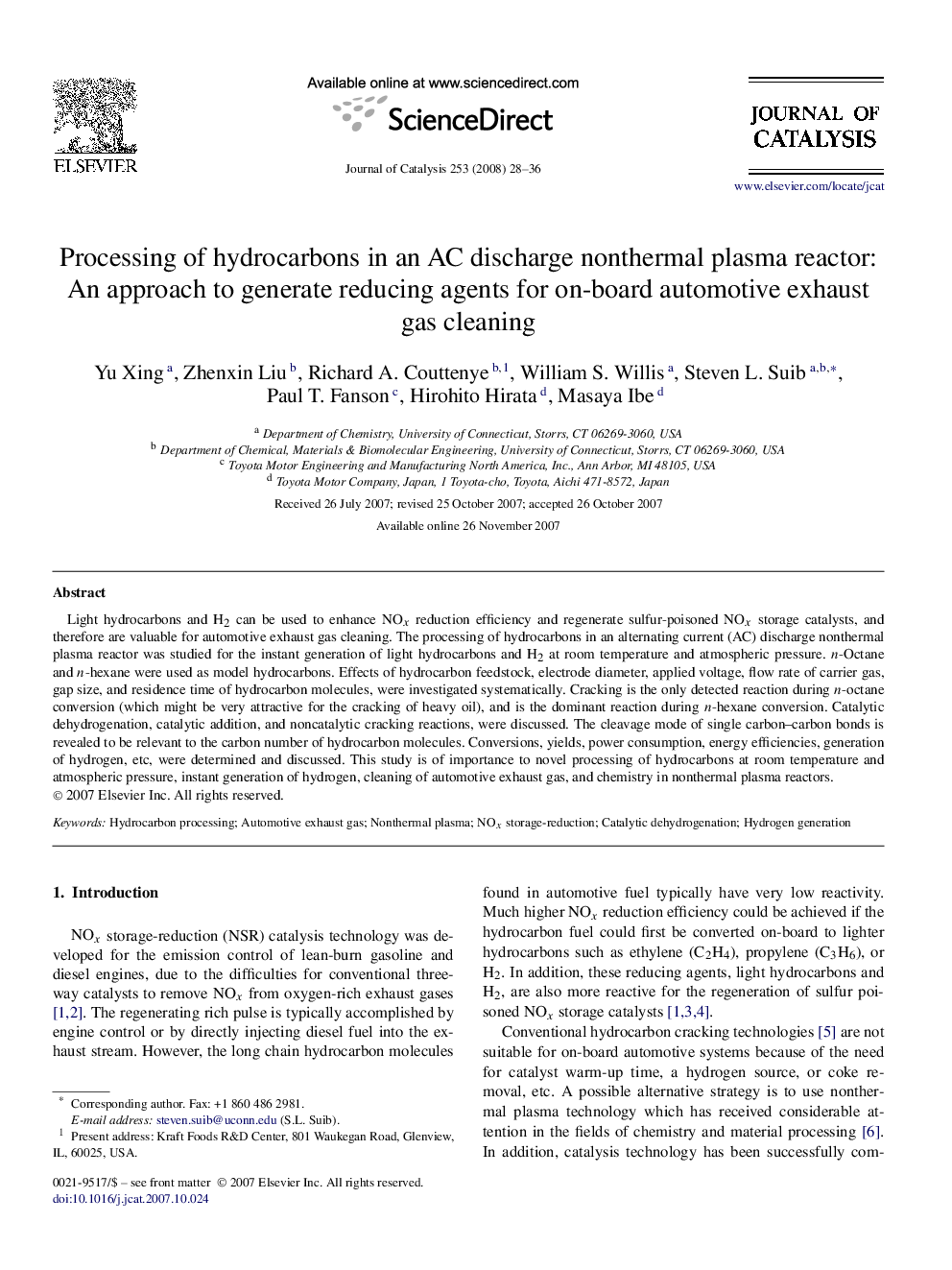| Article ID | Journal | Published Year | Pages | File Type |
|---|---|---|---|---|
| 62532 | Journal of Catalysis | 2008 | 9 Pages |
Light hydrocarbons and H2 can be used to enhance NOx reduction efficiency and regenerate sulfur-poisoned NOx storage catalysts, and therefore are valuable for automotive exhaust gas cleaning. The processing of hydrocarbons in an alternating current (AC) discharge nonthermal plasma reactor was studied for the instant generation of light hydrocarbons and H2 at room temperature and atmospheric pressure. n-Octane and n-hexane were used as model hydrocarbons. Effects of hydrocarbon feedstock, electrode diameter, applied voltage, flow rate of carrier gas, gap size, and residence time of hydrocarbon molecules, were investigated systematically. Cracking is the only detected reaction during n-octane conversion (which might be very attractive for the cracking of heavy oil), and is the dominant reaction during n-hexane conversion. Catalytic dehydrogenation, catalytic addition, and noncatalytic cracking reactions, were discussed. The cleavage mode of single carbon–carbon bonds is revealed to be relevant to the carbon number of hydrocarbon molecules. Conversions, yields, power consumption, energy efficiencies, generation of hydrogen, etc, were determined and discussed. This study is of importance to novel processing of hydrocarbons at room temperature and atmospheric pressure, instant generation of hydrogen, cleaning of automotive exhaust gas, and chemistry in nonthermal plasma reactors.
